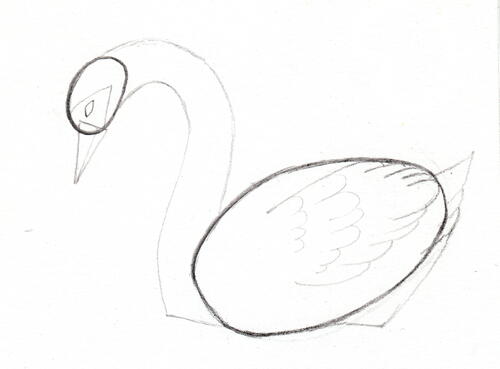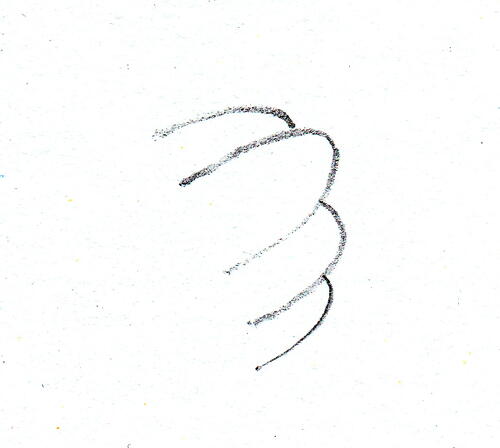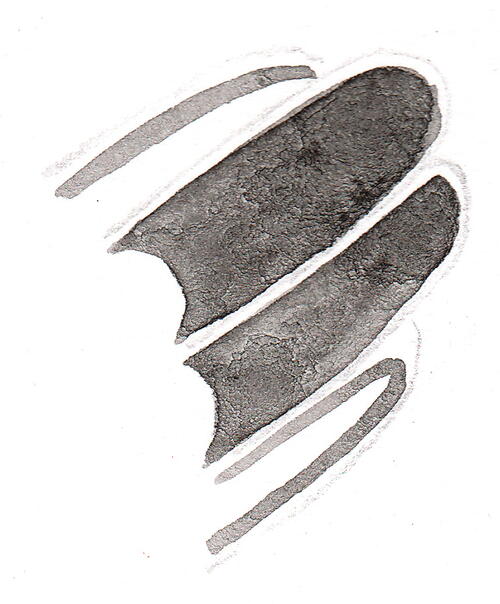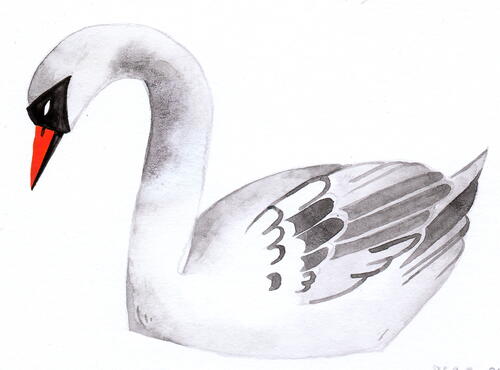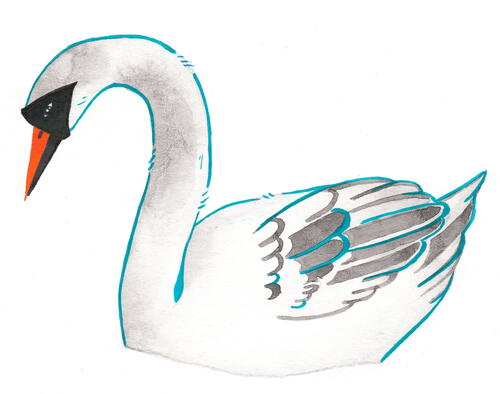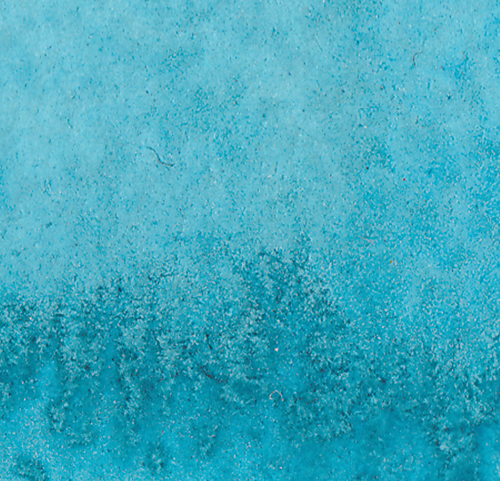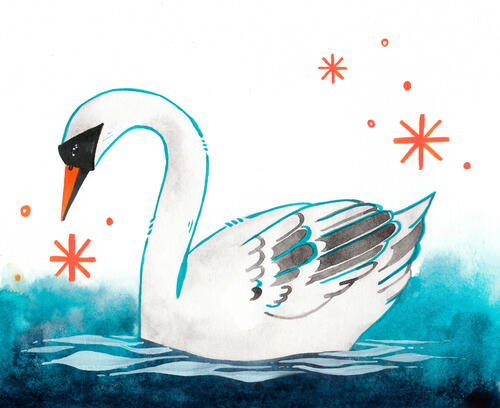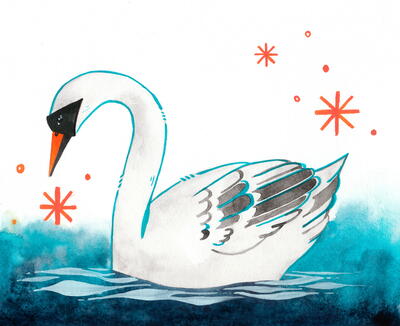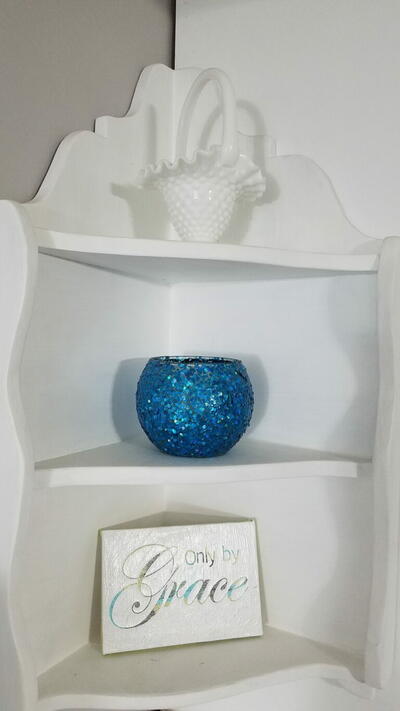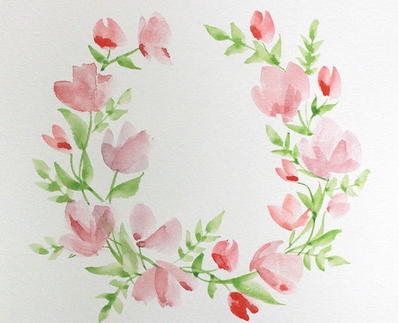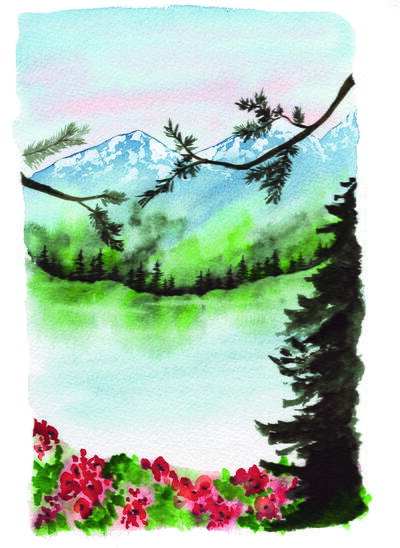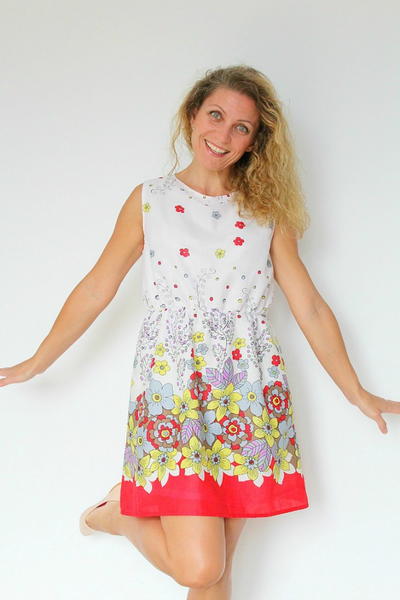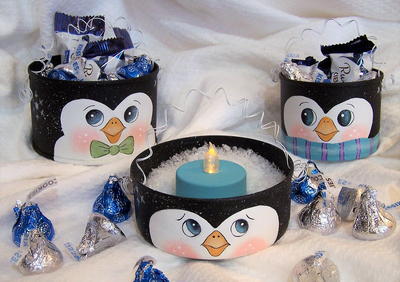Mute Swan
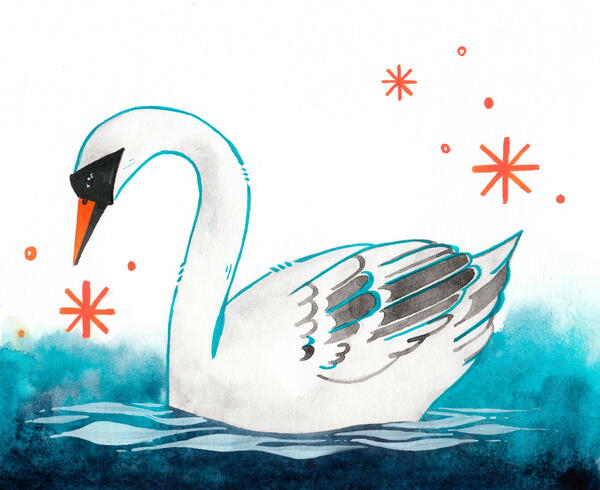
From the Artist: "Having had a chance to travel to many countries, one of my favorite memories was when I was in London visiting Hyde Park. We took a boat ride across the lake that was filled with beautiful swans. That picturesque moment always comes back to me whenever I remember lakes. From an artist’s perspective, it is generally more difficult to paint grayscale birds because the final painting tends to look dull. Hence, we will be adding contrast colors."
Materials List
- Watercolor cold press paper, 200gsm (95lb)
- Pencil
- Kneadable eraser
- Palette
- Glass cup
- Watercolor mop brush, size 000
- Round brush, size 4
- Script liner brush, size 0
- Tissue paper
COLOR SCHEME
Ivory Black
Bright Orange
Ultramarine Blue
Indigo Blue
White acrylic paint
DIRECTIONS
-
Start by drawing the swan, using light pencil strokes on cold press watercolor paper. Pay attention to the basic proportions of the swan. Start with an egg shape for the body of the swan. Add in a small oval shape for the face. Connect the two with parallel S curve lines for the neckline. Draw a triangle on the face for the beak. Now for the wings of the bird, continue drawing with simple U-shapes. Also use the same details for the tail feathers.
Once you are happy with the proportions, erase any dark pencil marks using a kneadable eraser. -
Let’s start with the first layer of the painting. Using a round brush loaded with translucent light ivory black paint, fill in the body of the bird. This watered-down mixture can be created by adding more water to the paint.
For a gentle blend, I like to use a single-color gradient effect at the tips of the wings, on the right side and from the left side along the neckline. Use the same effect along the face by using clean water to gently blend in the colors. Allow the painting to dry before moving on to the next step. -
In this layer, we will be adding inner details for the feathers as seen in the image. This can be done with a round brush loaded with a medium wash of ivory black. Here, we want to ensure that the paint isn’t saturated, but mixed with a little water for a gray shade. Now, paint U-shapes and U-outlines along the wings of the bird. These shapes can be added to the tail as well.
Pro-Tip:
Start with smaller shapes for the feathers and then move on to longer shapes at the tip of the wing.
Using a script liner brush loaded with ivory black, paint the V-shape around the eye and the bottom beak. Now, switch the paint in the brush to bright orange to paint the top beak. Allow the layer to dry before moving on to the next step. -
Now that the painting is dry, complete the swan by adding a contrasting ultramarine blue outline to the bird. Adding a contrast color brings the painting to life, as you can see in the image.
Also note: As per the image, there are gaps in the outline. These add to the artistic look of the overall painting and are an important part of the painting. -
Finally, complete the painting by adding a dual-color gradient effect from deep indigo blue to the ultramarine blue. This effect is created by using a mop brush. Allow this wash to dry.
Next, use a clean round brush loaded with white acrylic paint to add waves along the swan. This can be created using thin to thick to thin width lines. Alternate the placement to create a simple wave texture. Wash the round brush with clean water and load it with bright orange. Paint small clusters of spokes and circle elements around the swan to brighten the composition.
Read NextDarth Vader-Inspired Stencil

